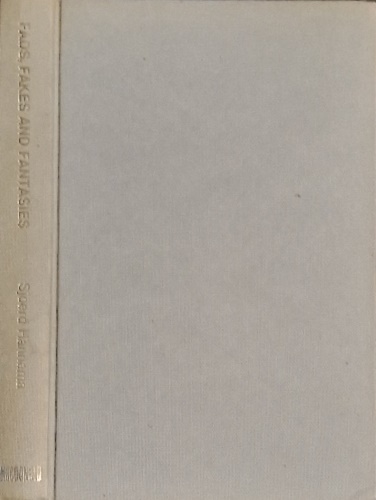 Hannema,Sjoerd.
Fads, fakes and fantasies: The crisis in the art schools and the crisis in art.
Hannema,Sjoerd.
Fads, fakes and fantasies: The crisis in the art schools and the crisis in art.
London, Macdonald
1970,
cm.14x22,
pp.XIV,146,
legatura editoriale cartonata.
The famous sit-in at the Hornsey College of Art in May 1968 was merely the most dramatic expression of a deep-rooted crisis in art education - and in art itself. While the essential ingredients of good art - sensitivity, vitality, integrity and a readiness to communicate - remain the same, these qualities are almost entirely lacking; instead, today's pseudo-art suggests futility, a narcissistic looking inward, a chilling and impersonal coldness. The gap between artist and public widens every year; the critic does little to bridge this gap. Art has become a clever commercial speculation, part of a fantasy world conjured up primarily by the news media. An incessant, nervous demand for novel and 'exciting' work and for young talent to invest in has turned the artist into a consumer product.If art is in a sorry state, so is art education. Each year, hundreds of fine-art students are sacrificed to the myth of Art with a capital their sense of purpose distorted, their talents tragically unexplored, their hopes cruelly dashed. They may seem coolly professional, confident, up-to-date; but this is merely because they are encouraged to restrict themselves to one or two currently fashionable idioms - which, of course, must never be too hard to imitate. Left largely to their own devices, art students study the latest trends as reported in the glossy magazines, and hopefully turn out their mimicries. Unique in being trained for a largely non-existent profession - how many artists live by their art alone? - they mostly drift, disenchanted, into teaching, where they transmit their own fine-art bias and so help to perpetuate the fine-art fantasy.Such, in outline, is the case which Sjoerd Hannema puts forward. He has developed and substantiated his arguments with great cogency, and a spirited refusal to bow down before fashionable gods. With an impressive historical grasp he traces the present malaise back to its roots in the Renaissance.Includes black & white illustrations.
EAN:
9780356031545
Note: mancante della sopracoperta.